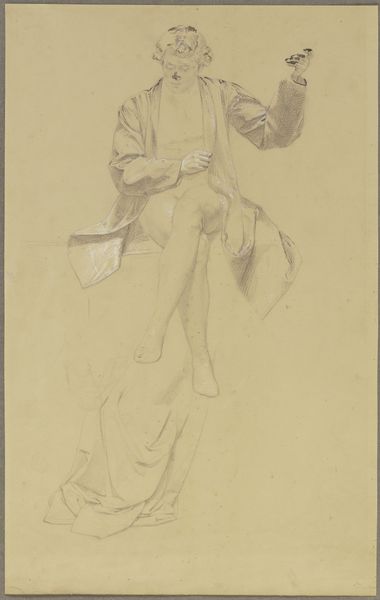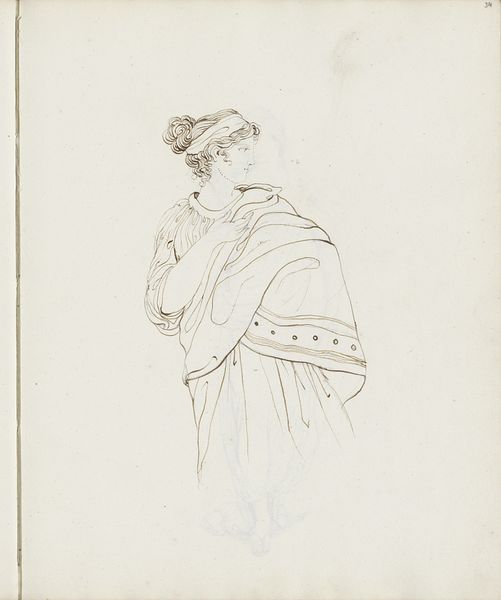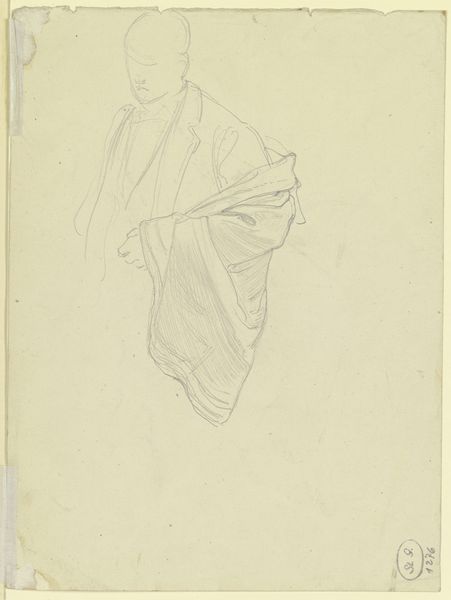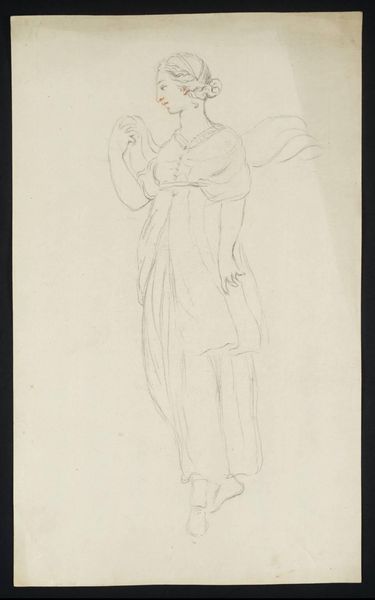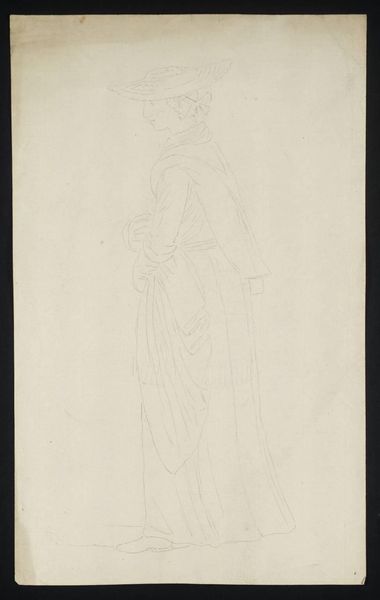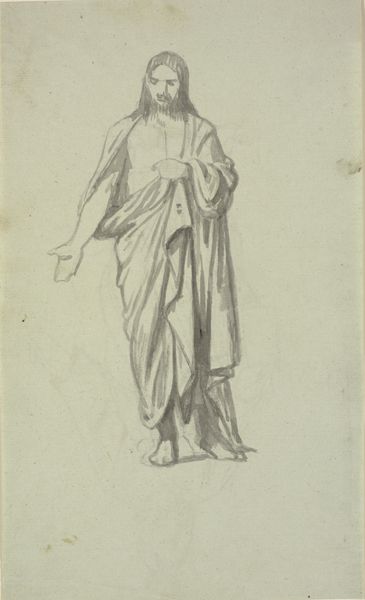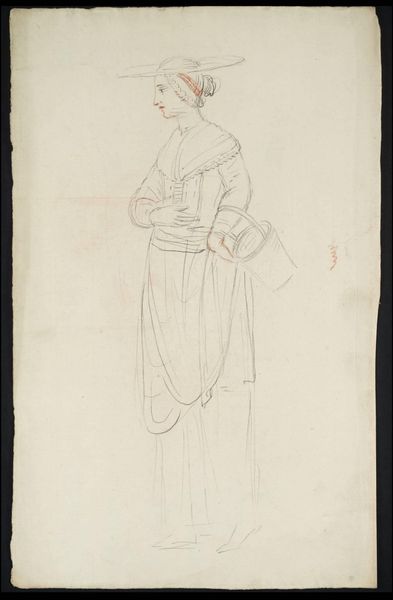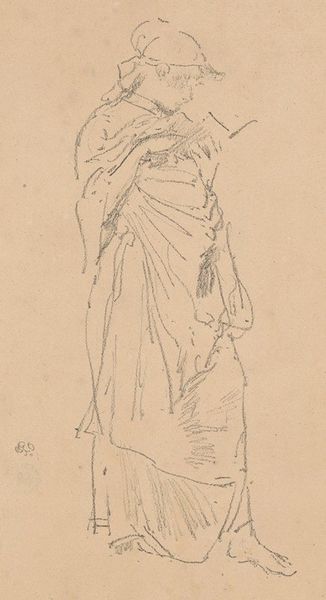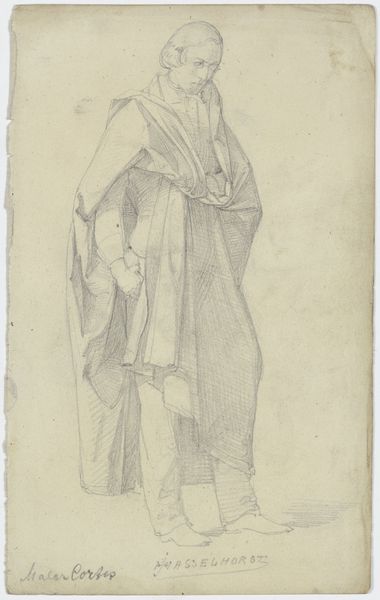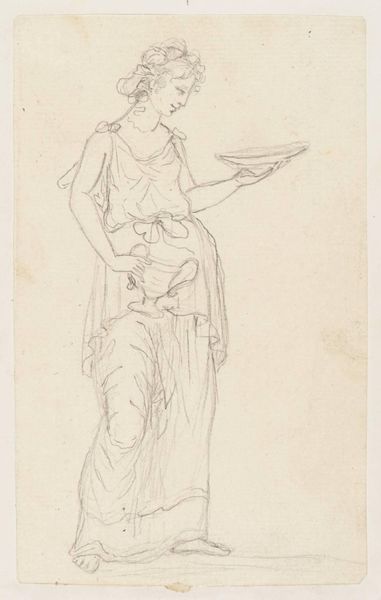
drawing, print, paper, pencil, chalk, graphite
#
portrait
#
drawing
# print
#
figuration
#
paper
#
child
#
pencil
#
chalk
#
graphite
Dimensions: 184 × 123 mm
Copyright: Public Domain
Curator: Standing before us is a drawing simply called "Woman with Baby," a work of undetermined date currently residing at the Art Institute of Chicago. It's executed using a combination of pencil, graphite, and chalk on paper, resulting in delicate tonal variations. Editor: The lightness strikes me first. The lines are so gentle, almost tentative. There's a quiet, nurturing feel despite the sketch-like quality. Curator: The sketch-like quality, as you call it, is significant. Such studies, particularly those focused on motherhood, reflect a broader trend. Representations of maternal figures evolved considerably over the 18th and 19th centuries, coinciding with shifts in social attitudes about women’s roles and sentimental views on childhood. Editor: It’s a timeless symbol. The draped figure, cradling her child close, immediately evokes classical imagery – think of ancient sculptures of Charity or the Madonna. Is there an intentional allusion here? It lends a layer of gravitas to an everyday scene. Curator: Perhaps. But context is key. The circulation and display of such images were, and still are, tied to market forces. The demand for portraits and depictions of domestic life greatly influenced what artists produced. Also, in the age of reproductive prints, the artist could use a sketch to establish a composition before transferring it to the printing plate and disseminating it widely. Editor: Absolutely, it acknowledges how easily such intimate, charged imagery can be reproduced and commodified. There is, undeniably, an innocence projected by this artwork and, simultaneously, the feeling that such innocence is somehow on display, ready to be exploited. Curator: Precisely. That tension speaks volumes. And in institutions like the Art Institute, we are, ultimately, engaging with a system that bestows cultural value – deciding what narratives about motherhood, representation, and artistry will persist. Editor: Yes. What we choose to frame, literally and figuratively, dictates what echoes through the years. I find this image deeply poignant for its quiet reflection of a powerful bond—even more so, as this bond became increasingly codified into the expectations of what women should embody. Curator: Indeed, it prompts a critical look at the forces at play.
Comments
No comments
Be the first to comment and join the conversation on the ultimate creative platform.
